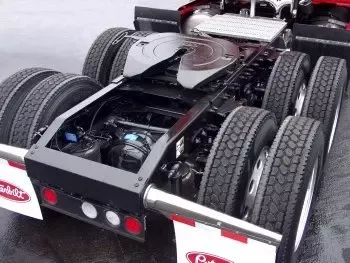jul . 23, 2024 14:29 Back to list
Guide to Installing and Exporting 5th Wheel Equipment for Optimal Performance and Safety
A Comprehensive Guide to 5th Wheel Installation and Exportation
5th wheel installations are essential for anyone engaged in transporting heavy loads using a trailer. This type of hitch enables the connection between a truck and a trailer, typically used by recreational vehicles, commercial trucking, and numerous industries needing significant hauling capabilities. Understanding the intricacies of 5th wheel installation and the exporting process is crucial for businesses aiming to enhance productivity and maintain compliance with regulations.
Understanding the 5th Wheel Hitch
A 5th wheel hitch consists of a coupling device that is mounted in the truck bed and engages with a coupler mounted on the trailer. The design allows for a more stable towing experience compared to traditional hitch systems, particularly for larger trailers. This stability is achieved through a unique pivoting mechanism that better accommodates the weight distribution of heavy loads. Before embarking on the installation process, it is vital to ensure that the truck and trailer are compatible with the specific type of 5th wheel hitch.
Preparation for Installation
Before installation begins, gather the necessary tools and equipment. Typically, you'll need
- A 5th wheel hitch kit, including the base and mounting plate. - Wrenches, sockets, and drills. - A torque wrench for securing bolts. - Safety equipment like gloves and goggles.
Depending on the make and model of both the truck and trailer, installation specifics may vary. Therefore, consulting the manufacturer’s instructions is essential, as they provide detailed guidance on vehicle compatibility and specifications.
Step-by-Step Installation Process
1. Select the Location Choose the mounting location in the truck bed. It is typically centered, a few inches from the cab to allow for proper clearance and turning radius.
5th wheel installation exporter

2. Mark the Drilling Points Position the mounting plate and mark drilling points based on the manufacturer’s instructions.
3. Drill Holes Carefully drill the holes where marked, ensuring compliance with safety standards and minimizing damage to the truck bed.
4. Install the Base Align the base with the drilled holes, securing it with bolts. It’s crucial to use a torque wrench to meet the specifications for tightness recommended by the manufacturer.
5. Attach the Coupler Once the base is installed, attach the coupler to the trailer. Check alignment and secure it thoroughly.
6. Inspection and Testing After installation, conduct a thorough inspection. Once satisfied with the fittings, perform a test tow to ensure all components function correctly.
Export Considerations for 5th Wheel Hitches
For businesses involved in exporting 5th wheel hitches, there are several factors to consider. Compliance with international standards and regulations is critical. Proper documentation, including customs forms and shipping labels, must accompany all products. Additionally, understanding the destination country’s import requirements can prevent costly delays and penalties.
Quality assurance is paramount when exporting; ensuring that all products meet the necessary safety and durability standards not only enhances your brand’s reputation but also lowers the likelihood of returns or damages during transit.
Conclusion
In conclusion, the installation of a 5th wheel hitch is a crucial step for anyone looking to enhance their towing capabilities. By understanding the installation process and ensuring compliance during exportation, businesses can facilitate smoother operations and build a reputable presence in the market. With the proper tools, adherence to safety protocols, and awareness of export regulations, individuals and businesses alike can enjoy the benefits of improved hauling efficiency and operational success.
-
Imperial Truck Repair Hayward CA - High Quality, Affordable & Reliable Services
NewsJun.10,2025
-
High Quality Fontaine International do Brasil – Best Discount Offers Online
NewsJun.10,2025
-
Premium Fontaine Valves - High Quality & Discount Offers Durable
NewsJun.10,2025
-
Premium Fifth Wheel King Pins Top Durability & Savings
NewsJun.10,2025
-
Best Semi Trailer Kingpins for Sale Premium & Discounted
NewsJun.10,2025
-
Premium Holland Fifth Wheel Slider Parts Durable & Discount Deals
NewsJun.09,2025
